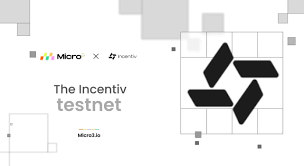Chimera Linux: A Fresh Take on the Future of Linux in 2025
Introduction
In the ever-evolving world of open-source operating systems, new distributions emerge regularly. Yet, few generate as much curiosity and discussion as Chimera Linux. Unlike most GNU/Linux distributions, Chimera Linux dares to be different: it uses musl instead of the standard glibc, combines tools from FreeBSD userland, integrates the LLVM/Clang toolchain, and favors modern lightweight init systems over traditional ones. This bold divergence makes it more than just “another Linux distro.” It is a hybrid system that blends the best of Unix traditions while pushing Linux in a new direction.
In 2025, Chimera Linux is making waves among developers, enthusiasts, and minimalists who are searching for speed, efficiency, and modularity. This article explores what Chimera Linux is, why it matters, what makes it unique, and whether it’s a good choice for your workflow.
What is Chimera Linux?
At its core, Chimera Linux is a general-purpose Linux distribution designed to rethink the foundations of how a Linux system can be built. Most mainstream distributions—such as Ubuntu, Fedora, or Debian—rely heavily on GNU components, glibc, and systemd. Chimera takes another path:
- musl libc: Instead of the GNU C Library (glibc), Chimera uses musl, a lightweight and standards-compliant C library. Musl is known for its simplicity, efficiency, and security, especially in static builds.
- FreeBSD Userland Tools: Instead of GNU coreutils, Chimera integrates tools from FreeBSD’s userland, bridging the gap between Linux and BSD operating systems.
- LLVM/Clang Toolchain: Rather than GCC, Chimera defaults to LLVM/Clang for compiling software, providing modern tooling and faster compilation in some scenarios.
- Init Diversity: Instead of forcing systemd, Chimera embraces lightweight alternatives, giving users and developers more flexibility.
This combination makes Chimera Linux feel less like a traditional GNU/Linux distribution and more like a Unix-inspired hybrid, hence the name “Chimera.”
Why Chimera Linux is Trending in 2025
Several reasons explain why Chimera Linux is gaining traction in the Linux world:
- Lightweight and Minimal
By avoiding bloated components and focusing on musl and FreeBSD utilities, Chimera delivers a faster and leaner environment. This makes it attractive for minimalists, embedded developers, and system hackers. - Breaking the GNU Dependence
Most Linux distros are tightly bound to GNU. Chimera shows that Linux can thrive with alternative libraries and userlands, fostering diversity in the ecosystem. - Modern Development Toolchain
With LLVM/Clang as default, Chimera aligns with a growing trend where developers are moving toward modern compilers and debuggers. This also makes it easier to integrate with cross-platform projects. - Security and Simplicity
Musl is smaller and has a reduced attack surface compared to glibc, making Chimera appealing to those who prioritize system security. - BSD-Linux Hybrid Appeal
Many in the open-source community admire the BSD philosophy but prefer Linux’s driver support and ecosystem. Chimera offers a compromise between the two worlds.
Key Features of Chimera Linux
Here are some defining features that make Chimera Linux stand out in 2025:
- Rolling Release Model: Always up to date, similar to Arch Linux, ensuring users have the latest packages.
- BSD-inspired Userland: Commands behave differently compared to GNU versions, giving a more Unix-like feel.
- musl Compatibility: Applications built against musl can often be smaller and more efficient, but compatibility with software written for glibc can sometimes be tricky.
- Portable Package Builds: Chimera emphasizes portability, allowing software to be compiled and distributed efficiently.
- Minimal Default Environment: No unnecessary bloat—users can build the system exactly as they want it.
Advantages of Chimera Linux
- Performance
With musl and LLVM/Clang, Chimera systems can feel snappier, especially on lightweight or embedded hardware. - Security-Focused
Musl reduces exposure to some vulnerabilities, and its smaller codebase is easier to audit compared to glibc. - Innovative Ecosystem
By combining BSD tools with Linux, Chimera provides a fresh experience for developers who like to experiment. - Flexibility
Unlike distributions locked into systemd, Chimera leaves space for alternative init systems. This flexibility appeals to users who prefer simplicity.
Challenges and Limitations
No distribution is perfect, and Chimera Linux faces its own challenges:
- Software Compatibility: Many third-party applications are built with glibc in mind, meaning users may face issues running proprietary or precompiled binaries.
- Learning Curve: BSD-style tools behave differently than GNU coreutils. New users may find familiar commands working in unexpected ways.
- Smaller Community: Compared to Arch, Debian, or Ubuntu, Chimera has a small but growing community, meaning fewer tutorials and support forums.
- Not Ideal for Beginners: It’s a distribution for tinkerers, developers, and enthusiasts rather than everyday casual users.
Chimera Linux vs Other Distributions
- vs Arch Linux: Arch offers a minimal rolling release, but it’s still tied to GNU. Chimera goes further by rethinking the base libraries.
- vs Alpine Linux: Alpine also uses musl, but Chimera expands the concept with BSD tools and LLVM integration.
- vs FreeBSD: FreeBSD is a complete Unix-like system, while Chimera uses the Linux kernel but borrows BSD’s userland for familiarity and efficiency.
- vs Ubuntu/Debian: Mainstream distros prioritize stability and wide compatibility, while Chimera focuses on innovation, performance, and experimentation.
Who Should Use Chimera Linux?
- Developers who want to explore musl-based systems and modern toolchains.
- Security enthusiasts who prefer leaner, more auditable code.
- BSD fans who appreciate Unix philosophy but want Linux kernel support.
- Advanced Linux users seeking a fresh challenge.
Chimera Linux is not recommended for beginners or for those who need 100% software compatibility. Instead, it’s perfect for people who want to push Linux beyond its usual GNU-centric comfort zone.
The Future of Chimera Linux
In 2025, Chimera Linux is still relatively young but rapidly maturing. As more developers and power users test its ecosystem, compatibility and software availability will continue to improve. Its unique approach positions it as more than just a niche project—it could become a pioneer in redefining what a Linux distribution can be.
If its community grows steadily, Chimera Linux may inspire future distributions to break away from GNU dominance and adopt hybrid approaches for better performance, modularity, and innovation.





